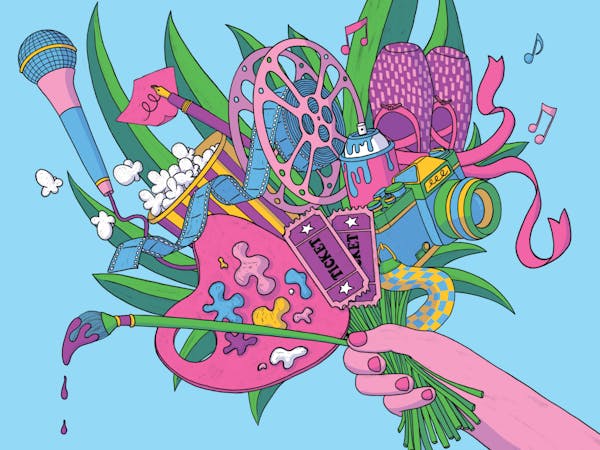An astute owl with a round belly and pointy claws that served as a wine vessel crafted in ancient China, circa the 12th or 13th century B.C., is one of the oldest objects in "Eternal Offerings: Chinese Ritual Bronzes," an immersive, time-traveling experience of an exhibition at the Minneapolis Institute of Art.
The show reimagines the museum's Chinese Bronzes collection, which holds works ranging from the late Shang to Zhou dynasties (1200s-200s B.C.).
Mia's Chair of Asian Art and Curator of Chinese Art Liu Yang teamed up with Academy Award-winning art director and film designer Tim Yip, best known for his work in "Crouching Tiger, Hidden Dragon," to create a totally new experience of these sacred objects.
"Bronzes held great ritual significance in ancient China," Yang said. "They were not just beautiful objects but used in making offerings to spirits and heavenly deities. The practice is based on the belief that life continues after death, so the spirits of ancestors and heavenly deities need to be looked after well."
Walking through the exhibition, visitors can experience an artistic re-creation of a full ritual ceremony from solitude in a temple to a banquet. The show includes more than 150 ancient Chinese bronzes, but there aren't wall labels there to explain them. Instead, it's meant to be a sensory experience. Visitors can grab an exhibition guide at the beginning with a QR code that goes to Mia's site and offers more detailed information.
"Before we reached out to Tim Yip, we were thinking how to do this because a conventional show would just be arranged in a chronological way … but it was too much," Yang said.
Instead, he thought it would make more sense to capture a few important scenes and ritual activities.
"I envisioned the experience of the visitor just like a person of the time, just going through the ritual process, starting with the temple," he said.
Ancient tour
In the first room, a black mirror on the ground reflects the video of water above and a canopy with 3-D-printed shards of bronze fragments, a metaphor for how these objects evoke the past. Ancient poems from the Bronze Age also are written on the walls.
"It is really important that the viewer [has something] in common with the experience," Yip said. "You can see [that] in the water."
In the second gallery, dramatically lit bronze birds, tigers, dragons and other beasts in glass cases, with a projection of the Yellow River onto the gallery walls, set the stage for spiritual beliefs of animism, that everything has a spiritual essence, and shamanism. During the Bronze Age, it was believed that zoomorphic figures (half-human, half-beast) were communicators between society and the world beyond.
The next room reimagines an ancestral temple filled with ritual objects, including bronze daggers, which are lit in an otherworldly way.
In the center of the fourth gallery, dedicated to ritual, sheets of fabric with the sky projected onto them fill the space with clouds billowing upward, suggesting direct connection with heavenly deities. The experience concludes with a celebratory banquet, and then a gallery devoted to li, a moral code in ancient China used to enforce hierarchies and social structure.
One of the last objects in the show is a bronze celestial horse from the 1st century, which stands upright, as if to greet visitors on the way out. It is one of the newer objects in the exhibition of a period before the fascination with bronze began to fade.
In the last gallery, there's another mirror, meant for contemplation, something that Yip was very purposeful about including.
"I want to open the door for people to connect again with the contexts. ... " Yip said. "It's a way of feeling. It's a vision."
'Eternal Offerings: Chinese Ritual Bronzes'
When: Ends May 21.
Where: Minneapolis Institute of Art, 2400 3rd Av. S.
Cost: $16-$20, free for ages 17 and under.
Related events: "Crouching Tiger, Hidden Dragon" screening on Thu. at 6 p.m.
Info: new.artsmia.org or 888-642-2787.

